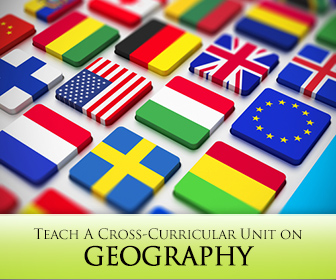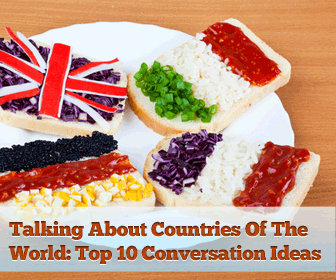Where Are You From? Where Are You Going? A Cross-Curricular Unit on Geography


Here are 10 activities designed to get the conversation started!

Warm up Games
Presentations
Ask each student to write up a presentation about their own country or any country that interests them. Suggest they use power point if they have a computer or they could make their own paper version of a power point presentation if they don’t. Work with your students to develop a list of topics that they could include in their presentation; cuisine, weather, population, animals, famous people.
Give your students a week or so to research and develop their presentation. You could also allow some time for them to work in class, however, it is a good homework exercise.
Suggest that they keep it short. No more than 5 minutes. Then over a number of sessions each student presents their country to the class. Encourage questions at the end of each presentation and of course a round of applause!
Tips:
- Have no more than three students present in one class as it’s hard to listen for too long and the other students can become restless. If you do spread them out over a few sessions, students are interested and really look forward to their colleagues’ presentation. They also become very supportive of their colleagues because they know it’s not that easy to do.
- Try to limit the number of corrections you make during your students’ presentation. Just be mindful that this can disrupt their concentration and make them even more nervous. Just let the presentation flow but do note the errors and follow up with individuals later. Students do like the one on one time with you and they value your feedback. Also see our article on non-verbal error correction here: ‘5 Non-Verbal Ways to Do Error Correction’.
Traditional Dress
Talk about the countries that have traditional dress such as the kilt in Scotland. Talk about the countries that have different standards of dress. What do people wear in different countries? How does the climate dictate what people wear? What other things influence what people wear in different countries?
Plan a Trip Around the World
Students can work in pairs to plan a trip around the world. Where would they like to go? Why? What would they most like to see in each country? Collect some travel brochures or just print off some maps of the world to prompt discussion. Or why not ask students to visit their nearest travel agent to get some brochures of the countries they would like to visit. The experience of asking for brochures would be great practice for them. Talk about the countries they have already been to. Which have they enjoyed the most and why?
Food from Different Countries
Talk about different cuisines, the way people eat, meal times, and cooking methods. How do these things similar or different from country to country? Go out to a restaurant together – perhaps a cuisine that they have not tried.
Around the World in 80 Seconds
What is happening in other countries right now? Ask one student to name a country and then choose a student to talk about that country in 80 seconds. Ask another student to play timekeeper. Feel free to adjust the time that students speak depending on their skill levels. This works well as a whole class activity. It can be quite fun and challenging as students try to keep to the timeframe.
Flags
Hand out coloured pencils and ask students to work in pairs to draw all the different flags that they know. Talk about which flag belongs to which country in pairs or small groups. How are the flags different? How are they similar? What colours are they? Describe them to each other.
The Olympics
Where will the Olympics be held in 2012? Where have they been held before and when? Which countries are known for being good at which sports? Which sports do you follow? Is your country particularly good in any sport? Will athletes from your country be attending the Olympics? Have you ever been to the Olympics? Do you watch the Olympics on TV? Name some famous Olympic athletes? What are they famous for? Which country do they come from?
Countries Discussion
Have a discussion about English speaking countries. How are they different from other countries and from each other? Name some famous people from these countries. Discuss the different meanings of some words and pronunciation. Come up with a list of as many as you can. For example; in parts of Australia flip flops are called thongs and trousers are called pants. Where as in England the words pants and thongs refer to underwear.
Souvenirs
A discussion about souvenirs can be a funny one! What are souvenirs all about? Why do people buy them? Do they really represent the country where you buy them or are souvenirs the same in every country just with a different name stuck on? What sorts of things do you buy when you visit other countries?
Write the common mistakes up on the board or on large sheets of paper so that students can refer to them. And have fun!